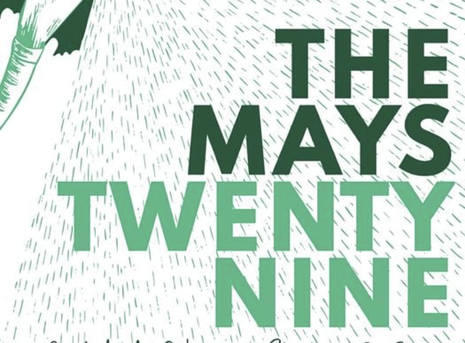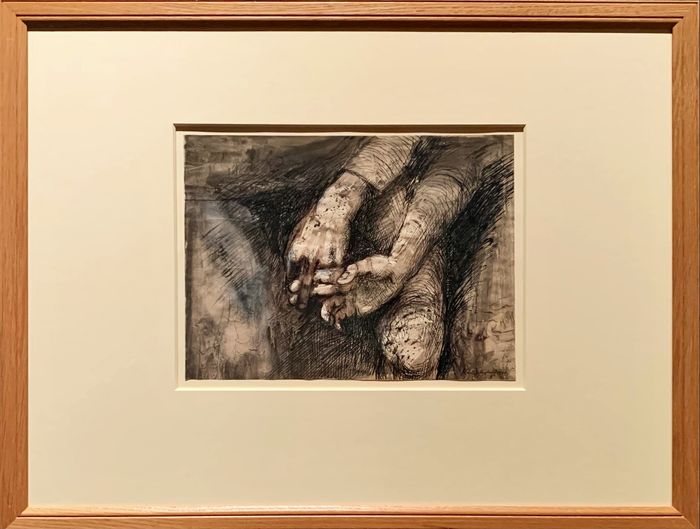The Mays Twenty Nine
Arts Editor Margherita Volpato reviews this year’s The Mays, and reflects on how words create intimacy.

The Mays Twenty Nine; I devoured it like one does ice cream. Too quickly, inducing brain freeze, I was overwhelmed by the talented student voices it held within its pages, intimate in all their words and observations. Ceci Browning writes in her foreword, ‘intimacy means different things to different people’. But I felt all of these voices within me, somehow.
“The Mays Twenty Nine; I devoured it like one does ice cream.”
The forewords by Arlo Parks and Clover Stroud preface the collection by contemplating poetry and the collection’s editing process. Arlo and Clover both use beautiful metaphors to describe the power of words and so I thought I would do the same, and try to emulate the impact I felt their forewords brought to The Mays Twenty Nine. Arlo’s foreword felt effortlessly poetic. Just like her music, her words are pithy waterfalls which ebb and flow with meaning, and leave just enough to the imagination to let you determine the colours and shapes she creates. She creates intimacy by highlighting the impact of the small things in life, which she both embodies and manages in her writing. Clover does the same, but her style is effortless in a different way. Whereas Arlo is elusive, and finds power in it, Clover’s words are tangible and comforting in their familiarity. If Arlo’s words are a waterfall, Clover’s are a lake, beautiful when found. Together, their words wash over these collections, inviting us to consider how anthologies are all innately similar in their search for connection. Ceci Browning’s foreword is just as important in setting the reader on the right path to approaching this incredible collection. It is, after all, a compilation of student voices and so her anecdote is vital in situating us back where we need to be, so that we can best understand these pieces. The experienced ease of these forewords draws us in, and invites us to explore these new voices.
All of the works in The Mays Twenty Nine capture the essence of intimacy; Rachel Oyawale’s Intimacy most concretely of all, as the everyday is turned whimsical through photography. The other pieces featured are no exception. Archie Hamerton’s Rosemary Baby is to me the portrait re-invented in collage, combining all of what makes a person; the still-life, by Alex Still (I sadly lack the wit to make a pun on his surname and his still-art) embodies an everyday almost too refined to be real; next to it, Sophie Bechingam’s Christ of St John On the Cross deconstructs what it means to paint the crucifixion, and displaces Christ for a cracking egg. What do these paintings want us to feel? Are we to re-investigate our connection with objects and their stillness? The intimacy of household objects, in this heightened and magnified form, seems to deconstruct the very idea of how we are meant to interact with them. The placement of these works next to each other is also important, because for me it highlights the integral behind-the-scenes work of the editors. Together, these two paintings speak to each other and we are reminded that they are placed there by those who created this anthology. It is through their doing that these pieces shine their brightest, as they are placed where they can best communicate with, and for, the reader. For me, it was just a further reminder that this is a collection, and one that, at its core, wishes to connect.
“this is a collection, and one that, at its core, wishes to connect.”
The written works in this anthology strive for this same connection, even when they might not seem to. Harry Sanderson’s A Brief Index of My Enemies might seem to create distance, as it lists every possible enemy imaginable (no matter how petty). However, the ending subverts this: ‘all of you holding my image perfectly / as I glare through this perspex partition.’ What was at first a distant (and a potentially cold and harsh) list is now an image, a portrait, of the speaker. We are, in the end, confronted with how connections are created: through words. Tina Sang’s A Final World and Brennig Davies’s Red Shoes are both explorations in what connects people in general, and how pain, hurt, loss and confusion are universal. They speak loudly about shared experiences, something which hits close to home in a time where much of our existence has become mundanely similar, as we are all enclosed within similar boundaries of little socialisation. Victoria Horrocks’s Two Eggs Fried similarly speaks to the universal anxieties of relationships. It carried with it, for me, a subtle intimacy, one communicated through small words and inflections; her writing reminded me of Sally Rooney’s lockdown favourite, Normal People. In all the conflicts presented, these works showed how through words they are organised, felt and worked through.
This entire collection is about the human desire for connection. Those works that I didn’t mention were equally as profound and beautiful, and I think whoever takes the time to read this review should read The Mays Twenty Nine if they haven’t already. Or maybe (if you already have read it) to read it a second time! It was a powerful read, not least of all because it felt close to home and personal. It was interesting to imagine some of these writers walking among us, on King’s Parade and in their colleges, whilst carrying around these amazing images and stories in their minds. We might be reading the work of a future artist, and that is perhaps the greatest intimacy that The Mays offers us, alongside hope for the future.
 News / Downing investigates ‘mysterious’ underground burial vault 29 December 2025
News / Downing investigates ‘mysterious’ underground burial vault 29 December 2025 News / Unions protest handling of redundancies at Epidemiology Unit30 December 2025
News / Unions protest handling of redundancies at Epidemiology Unit30 December 2025 Lifestyle / Ask Auntie Alice29 December 2025
Lifestyle / Ask Auntie Alice29 December 2025 Features / ‘Treated like we’re incompetent’: ents officers on college micromanagement30 December 2025
Features / ‘Treated like we’re incompetent’: ents officers on college micromanagement30 December 2025 Science / Astronomical events to look out for over the break29 December 2025
Science / Astronomical events to look out for over the break29 December 2025










